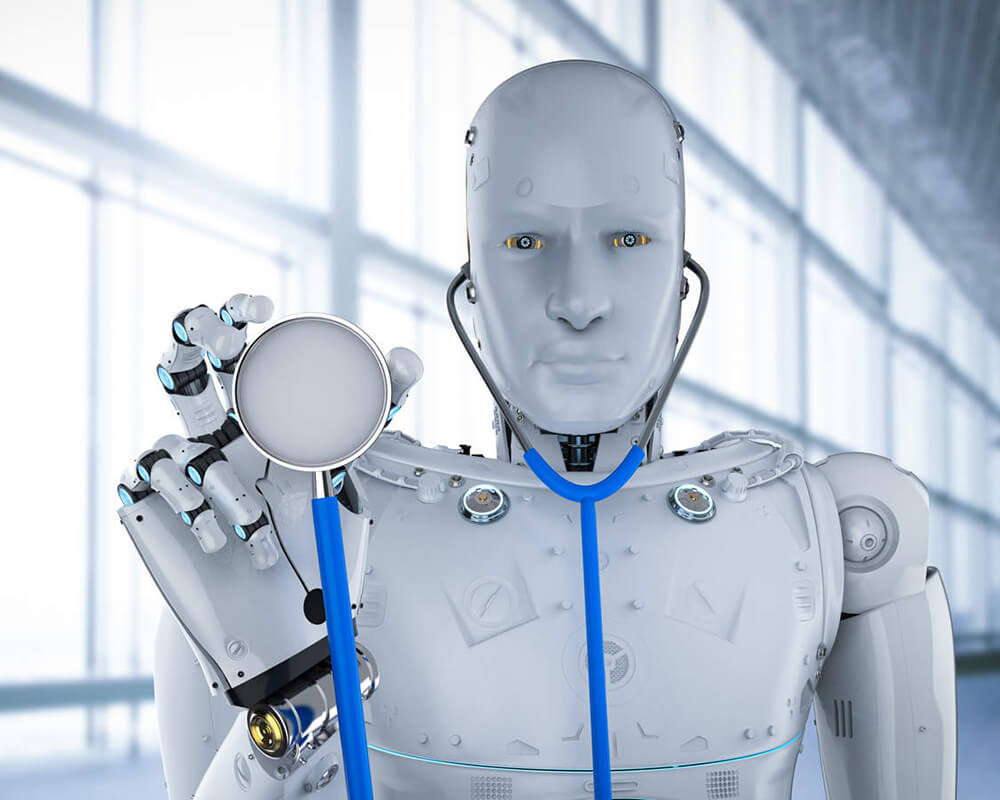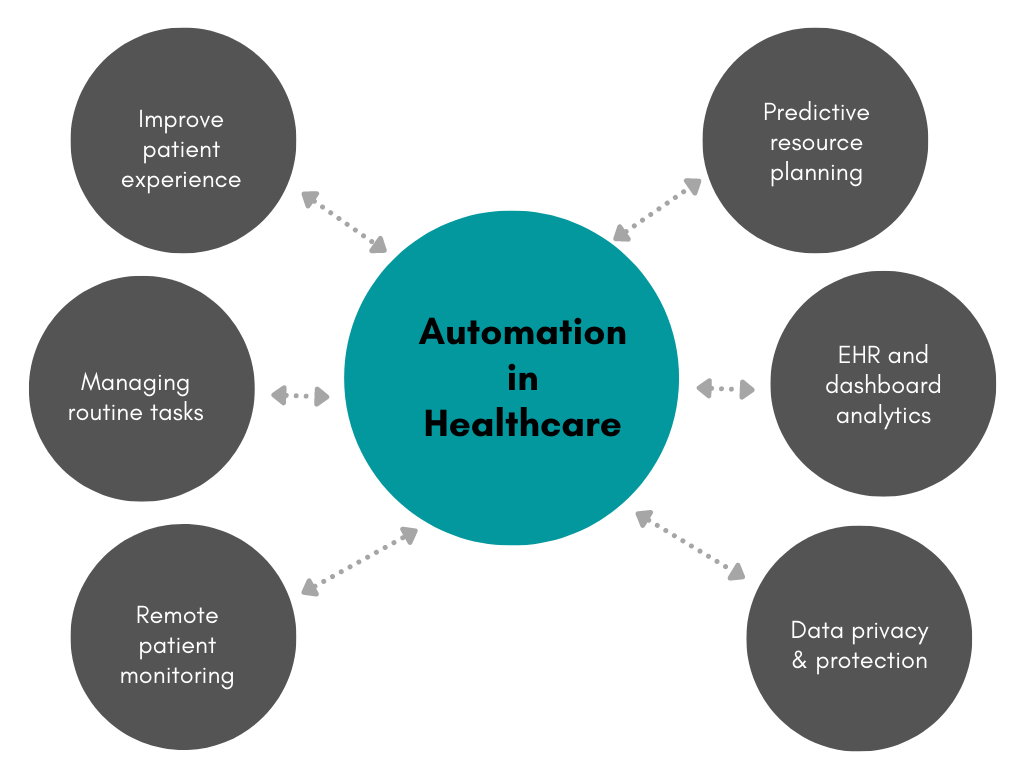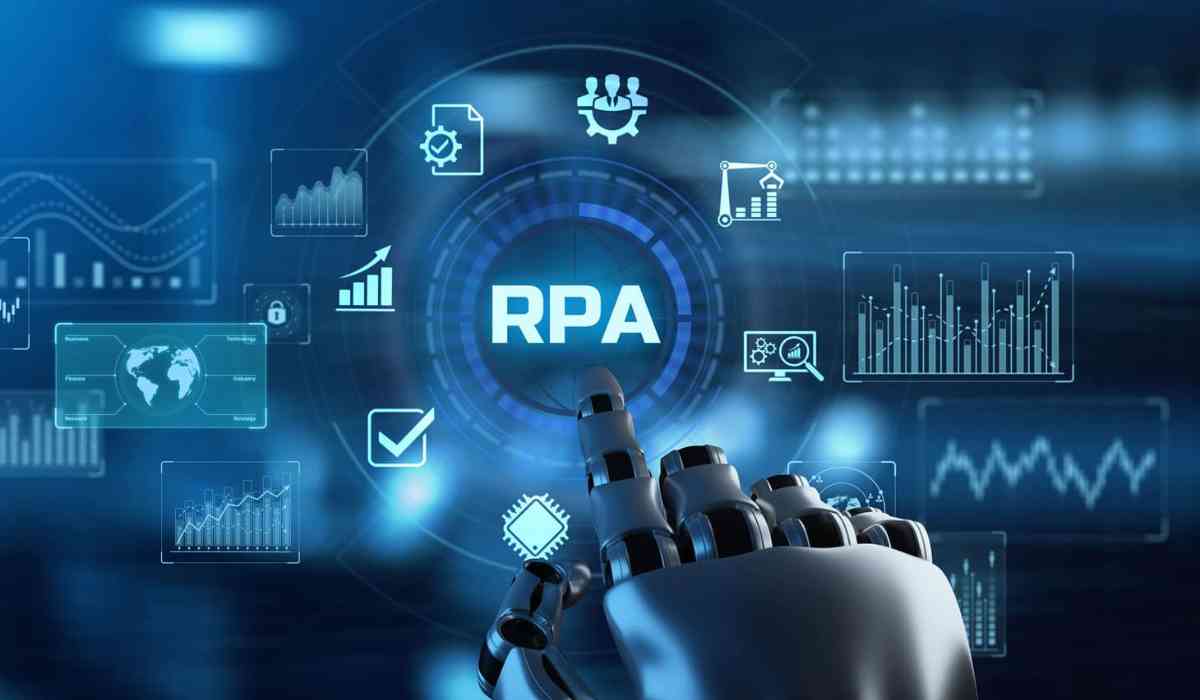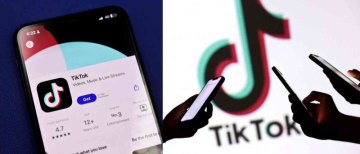Imagine a healthcare system where medical errors are drastically reduced, administrative burdens are lightened, and providers can devote their full attention to patient care. This is not science fiction—it is the transformative reality being shaped by Artificial Intelligence (AI) and Robotic Process Automation (RPA) in healthcare today.
With medical errors claiming nearly 250,000 lives annually in the U.S. and global healthcare spending expected to hit $10 trillion by 2025, the need for innovation has never been more pressing. The solution? AI and RPA—digital technologies revolutionizing the way healthcare operates.

What Are AI and RPA in Healthcare?
Let’s paint a picture. A nurse spends four hours of an eight-hour shift on paperwork. A patient waits three weeks for insurance verification that could be done in minutes. A doctor toggles between patient care and documentation, stretched thin and burning out.
This inefficiency is not only costly—it’s dangerous.
AI and RPA offer a compelling answer. RPA acts like a digital workforce, managing repetitive, rule-based tasks such as data entry, appointment reminders, and insurance checks. Meanwhile, AI functions as the “intelligent brain,” analyzing vast datasets to forecast outcomes, identify risks, and support decision-making.
Together, they represent the digital backbone of modern healthcare.
The Growth of Healthcare Automation
The healthcare automation market is booming. In just the past three years, healthcare providers globally have invested over $30 billion into AI implementation. Several factors are driving this surge:
-
Operational Efficiency: AI optimizes workflows, significantly reducing costs.
-
Telemedicine Expansion: A growing need for automated integration to handle virtual care.
-
Big Data Management: AI enhances how patient data is managed, secured, and analyzed.
-
Process Feasibility: With AI, automation becomes more adaptable and effective.

Key Trends in AI & RPA in Healthcare for 2025
As we approach 2025, a wave of transformative trends will shape healthcare’s future:
1. Agentic AI (Autonomous AI)
According to Gartner, Autonomous AI is set to redefine healthcare by enabling intelligent agents that plan and act based on defined goals. These agents can handle tasks independently, assisting staff and improving efficiency. But deploying agentic AI requires clear ethical and operational guardrails to ensure patient safety and compliance.
2. AI Governance Platforms
AI in healthcare will become more accountable with the rise of AI governance platforms. These tools help manage AI’s legal, ethical, and operational impact—ensuring transparency, policy enforcement, and lifecycle management. Trust in AI systems will be critical to widespread adoption.
3. Value-Based Care (VBC)
The shift from volume to value continues. In 2025, healthcare payments will increasingly be tied to patient outcomes. AI will support collaborative care models, enabling providers to deliver coordinated, holistic care that rewards quality over quantity.
4. Cybersecurity Automation
With increased telemedicine and digital records, IT security is a top priority. AI and RPA will be key in detecting and responding to data breaches, automating security protocols, and safeguarding sensitive patient data.

Core Challenges in Today’s Healthcare Landscape
Before diving deeper into automation benefits, it’s important to understand the pressing challenges facing healthcare providers:
1. Rising Costs
9% of U.S. adults skip or delay care due to high medical costs. This not only affects patient health but also creates instability for healthcare organizations trying to stay financially viable.
2. Slow Clinical Workflows
Average wait times to see a new provider? 26 days. Manual appointment scheduling, test result communications, and medication renewals clog the system, frustrating patients and causing them to switch providers.
3. Financial Pressures
Recent updates by CMS have introduced a 1.25% reduction in Medicare payments, squeezing already tight margins. Providers may be forced to cut services or reduce patient intake, impacting care delivery.
4. Workforce Shortages
89% of healthcare providers report difficulty finding skilled staff. With burnout running high—30% of workers considering leaving the profession—automation is no longer a luxury, but a necessity.
_1750697542.jpeg)
Top Use Cases of AI and RPA in Healthcare
AI and RPA are transforming nearly every aspect of healthcare delivery and administration. Here’s how:
1. Appointment Management
Missed appointments cost the U.S. healthcare system $150 billion annually. AI chatbots and RPA bots automate scheduling, send reminders, and match patients with available slots—reducing no-shows and administrative load.
2. Insurance Eligibility Verification
1 in 10 insurance claims get denied due to errors in coverage verification. AI can automatically collect, validate, and update patient insurance details, reducing denials and accelerating approvals.
3. Patient Scheduling
With 30% of appointments missed due to scheduling errors, automation enables real-time eligibility checks, retrieves patient info, and aligns preferences with doctor availability—resulting in timely, accurate scheduling.
4. Patient Onboarding
Manual onboarding leads to 40% error rates in intake forms. RPA can extract patient data, input it into EHRs, and attach necessary documents automatically, ensuring a smooth and accurate onboarding process.
5. Staff Onboarding/Offboarding
20% of new healthcare hires quit within 45 days due to poor onboarding. AI bots automate cross-departmental workflows, verify documents, and streamline communications, improving retention and compliance.
6. Referral Intake
With 50% of referrals untracked and many patients failing to follow through, RPA automates eligibility checks, prioritizes referrals, and enters data into EMRs. The result? Faster responses and better care continuity.
7. Prior Authorization
92% of physicians report care delays due to prior authorizations. AI bots can flag PA needs, submit requests, and track responses in real time—dramatically reducing patient wait times.
8. Digital Assistant for Staff
Clinicians spend 50% of their time on admin tasks. AI-powered digital assistants can resolve IT, HR, and finance requests instantly via voice or chat, freeing up time for patient care.
9. Healthcare Document Processing
Managing PDFs, faxes, and emails is time-consuming. AI with OCR technology extracts data from these sources and updates it into EHRs and billing systems—streamlining document management.
10. Revenue Cycle Management (RCM)
RPA automates claim submissions, denial follow-ups, and payment tracking, reducing A/R days and boosting claim accuracy. It strengthens financial health and minimizes manual effort.

Key Benefits of AI and RPA in Healthcare
The integration of AI and RPA is more than just a tech upgrade—it’s a fundamental shift in how healthcare operates.
1. Faster Data Interoperability
AI unifies disparate data sources, enabling real-time access to lab reports, histories, and treatment plans. This improves diagnostic accuracy and continuity of care.
2. Lower Operational Costs
Automation reduces dependency on manual work, cutting down on errors, administrative costs, and delays.
3. Enhanced Revenue Management
AI predicts denial patterns, automates claims, and accelerates payment collection—creating a more robust revenue cycle.
4. Better Referral Management
Automation improves referral accuracy and response time, ensuring timely, specialized care for patients and reducing drop-offs.
5. Optimized Workflows
From appointment scheduling to staff management, AI predicts patient inflow, allocates resources, and balances workloads.
6. Improved Billing and Reimbursement
AI detects billing errors before submission, reducing denials and enabling quicker reimbursements.
The Road Ahead
The question isn’t whether AI and RPA should be adopted in healthcare—it’s how fast we can implement them to save lives, cut costs, and improve experiences for both patients and providers.
As we head into 2025, healthcare organizations that embrace AI and RPA will lead the charge toward safer, smarter, and more human-centric care. The future of healthcare is here—and it’s automated, intelligent, and deeply compassionate.
With inputs from agencies
Image Source: Multiple agencies
© Copyright 2025. All Rights Reserved Powered by Vygr Media.
























